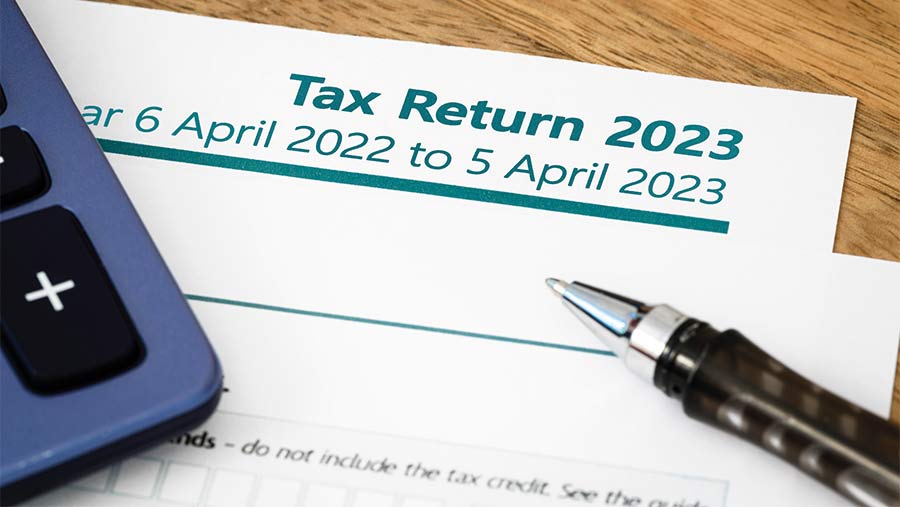Business Clinic: What to do about HMRC basis year reforms?
 © Paul Maguire/Adobe Stock
© Paul Maguire/Adobe Stock Whether it’s a legal, tax, insurance, management or land issue, Farmers Weekly’s Business Clinic experts can help.
Here Christine Courtman of accountant MHA explains the options for farm businesses in light of forthcoming HMRC reforms to the way the profits of sole traders and partnerships will be taxed from April next year.
I’ve read a bit about the basis year changing for tax from April next year but am not sure what action, if any, we should take to prepare for this. We’re a mixed farm with a 30 April year-end.
HM Revenue & Customs is changing the way in which profits from unincorporated businesses are assessed, with the “current year basis” being abolished, and replaced with a “tax year basis” of assessment.
See also: Business Clinic: What are the options for our cash surplus?
Under this regime, businesses will be subject to tax on profits arising within the tax year, regardless of accounting period end – a reminder that the tax year runs from 6 April to 5 April (dates from 31 March to 5 April inclusive are treated as aligned to the tax year).
Generally, a 30 April year-end has been a “good” year-end for income tax planning purposes, as it gives a long period before tax is due, and also leaves most of the year to consider pension contributions and other tax planning considerations.
Unincorporated businesses have a couple of options.
One is to change the accounting period end to align with the tax year.
You could shorten your accounting period to 31 March 2023 or wait until 2024, giving you a longer period of assessment.
Either way, one of your upcoming tax returns will account for 23 months of trading profits or losses.
HMRC published guidance stating that any tax due on additional profits can be spread over five years, but only if you transition in the 2023-24 tax year.
If you changed your year-end to 31 March 2024, this effectively means profits for the period 1 May 2023-31 March 2024 would be spread over five years, with one-fifth being taxed within 2023-24.
It is important to note you would already be being assessed on the profits generated in the accounting year ending 30 April 2023 within your 2023-24 tax return.
If you were to shorten your accounting period so it ends on 31 March 2023, there is no relief, and the entire tax liability would be due in January 2024.
This could present a significant cashflow requirement, especially as results for the year ending 31 March 2023 have generally been good as they represent harvest 2022 profitability.
Another option would be to keep your year-end as it is, but report profits on a tax year basis.
This would mean estimating profits for the tax year to report on your return.
You would still end up having a 23-month assessment reported on a tax return.
There is an administrative burden on this and it is likely this would also incur additional fees from your adviser.
Under either option, any overlap profits you have can be offset against the tax liability.
This is essentially a relief for profits you might have been taxed on twice when you started or joined an unincorporated business.
If you are affected by basis periods, I would recommend you ask your adviser what your overlap profit position is.
Key considerations should be:
- The timing of capital acquisitions and disposals New purchases are likely to be relieved under the Annual Investment Allowance (AIA), which allows full deduction of the cost of the asset against your profits, assuming they are on-farm and in use by the year-end. Similarly, if you dispose of assets that have previously had AIA claimed on them, you are likely to end up with a balancing charge that will increase your taxable profits.
- Pension contributions Extending your accounting period end to March 2024 presents an opportunity to plan pension contributions so tax arising on the additional profits is efficiently managed.
- Market volatility This is is another consideration, with harvest 2023 being less fruitful than 2022, along with consideration of what your farm valuation position might be at each period end.
- Cashflow If you shorten the year end in 2022-23, the entire tax liability for 23 months’ profits will be due in January 2024, whereas if you wait until the 2023-24 tax year, you can spread the additional taxable profits. You do run the risk that tax rates increase in the future, however there is the ability to satisfy the outstanding balance early in full, if you wish to do so.
In all circumstances, farmers’ averaging may be used to reduce tax liabilities; however, transition profits should not be taken into account in determining the relevant profits for the purposes of farmers’ averaging.
I strongly recommend you talk to your accountant to understand your current situation and assess the position in full, so you can make informed decisions as to what action to take.
Do you have a question for the panel?
Outline your legal, tax, finance, insurance or farm management question in no more than 350 words and Farmers Weekly will put it to a member of the panel. Please give as much information as possible.
Email your question to FW-Businessclinic@markallengroup.com using the subject line “Business Clinic”.
